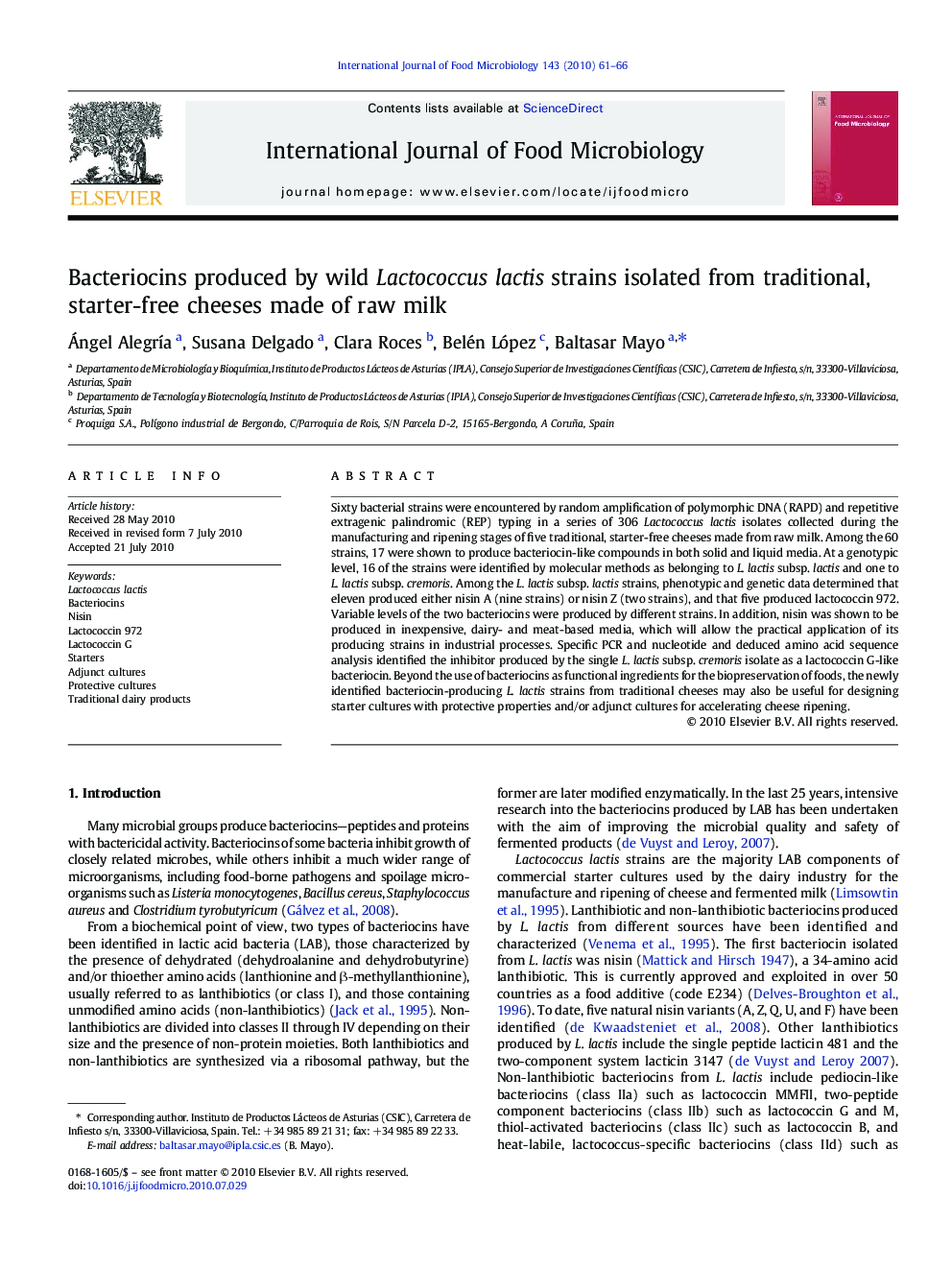| Article ID | Journal | Published Year | Pages | File Type |
|---|---|---|---|---|
| 4368089 | International Journal of Food Microbiology | 2010 | 6 Pages |
Sixty bacterial strains were encountered by random amplification of polymorphic DNA (RAPD) and repetitive extragenic palindromic (REP) typing in a series of 306 Lactococcus lactis isolates collected during the manufacturing and ripening stages of five traditional, starter-free cheeses made from raw milk. Among the 60 strains, 17 were shown to produce bacteriocin-like compounds in both solid and liquid media. At a genotypic level, 16 of the strains were identified by molecular methods as belonging to L. lactis subsp. lactis and one to L. lactis subsp. cremoris. Among the L. lactis subsp. lactis strains, phenotypic and genetic data determined that eleven produced either nisin A (nine strains) or nisin Z (two strains), and that five produced lactococcin 972. Variable levels of the two bacteriocins were produced by different strains. In addition, nisin was shown to be produced in inexpensive, dairy- and meat-based media, which will allow the practical application of its producing strains in industrial processes. Specific PCR and nucleotide and deduced amino acid sequence analysis identified the inhibitor produced by the single L. lactis subsp. cremoris isolate as a lactococcin G-like bacteriocin. Beyond the use of bacteriocins as functional ingredients for the biopreservation of foods, the newly identified bacteriocin-producing L. lactis strains from traditional cheeses may also be useful for designing starter cultures with protective properties and/or adjunct cultures for accelerating cheese ripening.
